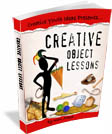The woman at the well is probably the most incisive of the New Testament narratives of Jesus’ dealing with the spiritually lost. It is found only in the fourth chapter of John’s gospel. From it we can learn many things about personal evangelism in general that can also be applied to our evangelism to youth.
The background for this passage involves the Lord Jesus Christ, leaving Judea and and traveling through Samaria to Galilee. As he travels through Samaria, He stops at the city of Sychar, near Jacobs well, to rest and eat. At noon, he waits beside the well for a divine appointment, as his disciples go into the city to buy food.
The Master’s Classroom
Interestingly, John records that Jesus “had” to pass through Samaria. It was not an accident that Jesus went through Samaria. “There were several roads leading from Judea to Galilee: one near the sea coast, another through Perea, and one through Samaria.” �1�� The road through Samaria was the least traveled, yet it was the road Christ “had” to travel. What the disciples saw as an uncomfortable trip, through a land of people against whom Jews had great prejudice, was actually a divine appointment. God will often put us in places of personal discomfort as a classroom for the greater teachings of the Kingdom of God. In this case He teaches the disciples that there is not room for barriers of any kind in the Kingdom of God. The gospel is a gospel for all people. Manmade barriers of prejudice, culture, and the lifestyles of people must not block the divine flow of the living water. ���
����The Master’s Workshop���
The Samaritan woman came to draw water–a common act, done in common way, but this time to have uncommon results. Unknown to her, she had an appointment with the Son of God. Jacob’s well became Christ’s workshop for the repair of her soul. We too need to discover the common activities of youth that can be used as platforms from which to lead lost youth to a saving knowledge of God. Any contact with a lost youth is an opportunity for sharing the gospel if we would only look. The most effective witnessing occurs in those natural situations where youth interact. A popular theology of today says “let me live a good life, and if you ask me about God, I will take you to church.” How long would Christ have had to sit at the well before the woman would have noticed his good life? Jesus took the initiative and so should we. Think of the opportunities we pass up daily. What opportunities are you passing up to reach out to youth?
The Master’s Methods
Get Acquainted
���Jesus seeks to “draw” the woman into a conversation by asking her to “draw” Him a drink of water. She recognizes Him as merely a Jew and wonders about his request. ���”‘Never speak to a woman in the street, even if she be thy wife’; ‘Burn the words of the law rather than teach them to a woman,’ were the great maxims in Jewish society.” �2��� Even so, Christ’s greatest concern was the condition of the woman’s soul. Because of this, he would reach out to her, even if it violated custom. Manmade barriers must not hinder the gospel. In the customs of the day there is another interesting meaning to Christ’s request for a drink. In the East, “the giving and receiving of a drink of water is the seeking and making of a covenant of hospitality, with all that that covenant implies… it is like the covenant of bread-sharing, which makes a truce, for the time being, between deadliest enemies.” �3��� By asking for water, Christ was not only drawing the woman into conversation, but disarming any defense that she might put up concerning his identity as a Jew. He was showing an interest in her as an individual. “The woman, the Samaritan, the sinner, is placed over against the Rabbi, the ruler of the Jews, the Pharisee.” �4��� Her birth, her sex, and her lifestyle were all barriers, but the gospel knows no barriers. The gospel sees only the need of the individual. We should also see the individual needs of our youth!
����Arouse Interest���
Christ offered the “gift” of living water to the Samaritan woman. Notice that the living water is a “gift” received by “asking.” The reason men do not ask, is because they do not know that it exists. �5��� ��� The Samaritan woman did not know the gift of God because her sight was focused on her earthly condition and her physical thirsts. Too often, people miss the spiritual because they are focused on the physical. Like Christ, we must use their physical needs and perceptions to lead lost youth to a knowledge of the spiritual.
The Samaritan woman then calls Christ “Sir.” She no longer sees Him as merely a Jew, but a Jew who deserves her respect. She still does not understand that Christ is speaking of the spiritual, but proceeds with a question about the method by which Jesus could obtain living water. “Jesus is speaking of the water of life; the woman is thinking of flowing water, so much more desirable than the flat water of cisterns.” �6��� Jacob had to dig a well for water. Did Christ know a way of obtaining running water? “‘Canst thou do more than dig a well?’ was the meaning of the woman’s question to Jesus.” �7��� Indeed He could! Abraham left them a well of stagnant water, but Jesus would give her a spring of living water. To the Samaritans, Abraham left a religion, but Jesus promised a growing relationship with God. Jesus “does not say He is greater than Jacob, but suggests that He has better water to give than that which was in Jacob’s well.” ��8��� The well of Jacob was so deep that it had already lasted 1500 years and was still being used. It still exists today, though much of it has been filled. How much deeper then is the love of God for this woman. (Ephesians 3:18-19)��� ���
���
The Samaritan Woman’s religion was only a dry well, but Christ offered a living relationship. The Samaritan woman “identified herself with a religion which,… instead of leading her to God, only supplied a substitute for Him.” �9��� “The gift of God is not dry doctrine, but a living Being.” �10��� Dry doctrine creates a thirst, but Christ quenches the thirst. Dry doctrine becomes foul and corrupt over time, but a relationship with Christ refreshes and takes away foulness and corruption. Dry doctrine is stagnant, but a relationship with Christ is active. Dry doctrine evaporates, but the living water is a spring to ourselves as well as to others. “Most men draw their supplies from without; they are rich, happy, and strong, only when externals minister to their strength, happiness, and riches.”�11��� Christians draw their supplies from their relationship with God. From which do we drink? Do we drink from our religious practices and doctrines or do we continually seek refreshment from a vital relationship with the Savior. When we present the gospel to youth, do we present a religion and a system of beliefs or do we introduce the Savior?
����Gently Confront Sin���
When a river becomes obstructed the water stagnates and foul and decaying things are collected. One solution is to clear away the obstructions, but the same would only reoccur in a matter of time. The best solution is clear away the obstructions and then increase the water flow. When Jesus asks about her husband, He is seeking to clear away the obstructions. The woman says that she has no husband. “Instead of wringing the rest of the confession from the woman, Jesus makes it for her. It is a touch of His gentleness with the sinner.” ��12��� ��� “The conversation had passed from the small-talk to the personal.” �13��� Notice that Christ made the most of an ignorant sinner’s words instead of attacking. We would be wise to do the same with youth. We must allow the confrontation of the sinner to be with Christ and the gospel, not anything else.
She then calls Jesus a prophet and sidesteps the conversation from herself to the location of worship. It is very natural for someone to cover their eyes when a bright light is flashed. It is natural for a person walking from darkness into the brilliant light of the Son of God to shade their eyes. The Samaritan woman was no different. Her pain is too great not to shade the eyes of her heart lest it be blinded. Yet Jesus is too compassionate to leave her in such a state. He answers her diversionary question then returns to crux of the conversation–the gospel.
����Answer Legitimate Questions but Confront Sinners with who Christ is���
Christ answers her question, but instead of giving her religion Christ confronts the woman with who He is and thus opens the door for a personal relationship. “‘Jesus’ words are, literally: ‘I am, who speak to you.'”��14 ���Jesus is literally saying that He is God using a term the woman would be familiar with from Exodus 3:14. Notice the progressing realization of the woman concerning the identity of Christ. He first was a Jew, then was to be compared with Jacob, then he was a prophet, and then he was the Messiah, and finally he became her Messiah.���
When she realized Christ was the Messiah, she left her water pot and went to tell everyone of Him. When Christ truly becomes Lord, He becomes our first priority. John does not say the woman “forgot” the water pot nor does he say that she “purposely” left it. Either way, now that she had come face to face with Christ, the water pot was of little or no importance to her. Her focus was no longer on the physical, but instead was on the spiritual. As the woman went to tell others, “the living water which the woman received from Jesus had certainly become an overflowing fountain in her life, and others were coming to share the refreshment that she had begun to enjoy.” ��15��� John points out that many believed because they had heard for themselves through the testimony of the Samaritan woman. We must also bring youth to a personal knowledge of Jesus Christ.
����The Master’s Message���
If Christ had began with her sin, her heart would have been hardened, had he began announcing Himself as the Christ she would have been skeptical, had He approached her as Nicodemus she would have been puzzled. Instead he uses that which she knows well to lead her to a deeper spiritual understanding.��� “He takes ‘water’ for his text to this water-carrier. In a picture lesson unfolds the truth. Ours are blind eyes if they do not see texts in the commonest things, where from we may preach the gospel of the kingdom.” �16 ��� “Christ did not preach sensational sermons, but sermons which created a sensation.”��17��� Christ’s objective was the person, not the method or the message. The message was aimed at reaching the person. Do we deliver sensational messages to youth or do we deliver messages to reach youth. Are the words we speak our focus, or the youths to which we speak? Do we care for lost youth as Christ cared for the lost?
End Notes�
�1��� William Hendrickson, ����New Testament Commentary: Exposition of the Gospel According to John��� (Grand Rapids: Baker Book House, 1981), 155.
�2��� Joseph S. Exell, ����The Biblical Illustrator: John I��� (Grand Rapids: Baker Book House���, 1953)��� 299.
�3��� Ibid., 317.
�4��� Ibid., 313.
�5��� Ibid., 314
6��� Raymond E. Brown, ����The Anchor Bible���, vol. 4, ����The Gospel According to John (i-xii)��� (New York: Doubleday and Co., Inc., 1966), 170.]
�7��� Exell, 311.
�8��� David Thomas, ����The Gospel of John��� (Grand Rapids: Kregel Publications, 1980), 87.
9��� Exell, 345.
�10��� Ibid., 321.
11��� Ibid., 332.
�12��� R.C.H. Lenski, ����The Interpretation of St. John’s Gospel��� (Ohio: The Wartburg Press, 1942), 317.
�13��� Frank E, Gaebelein, ed., ����Expositor’s Bible Commentary��� (Grand Rapids: Zondervan Publishing House, 1981), vol. 9, ����John���, by Merrill C. Tenney, 55.
14��� Barnabus Lindars, ����The New Century Bible Commentary���: ����The Gospel of John��� (Grand Rapids: Eerdmans Publishing Co., 1987), 191.
15��� F.F. Bruce, ����The Gospel of John��� (Grand Rapids: Eerdman’s Publishing Co., 1983), 115.]�1@�
16 ���Exell���, 307.
�17��� Ibid., 309.
Bibliography
Brown, Raymond E. ����The Anchor Bible���, vol. 4, ����The Gospel According to John (i-xii)���. New York: Doubleday and Co., Inc., 1966.
Bruce, F.F. ����The Gospel of John���. Grand Rapids: Eerdman’s Publishing Co., 1983.
Exell, Joseph S. ��� ����The Biblical Illustrator: John I��� Grand Rapids: Baker Book House���, 1953.
Gaebelein, Frank E, ���ed., ����Expositor’s Bible Commentary���, vol. 9, ����John���, by Merrill C. Tenney, Grand Rapids: Zondervan Publishing House, 1981.
Hendrickson,William ����New Testament Commentary: Exposition of the Gospel According to John.��� Grand Rapids: Baker Book House, 1981.
Lenski, R.C.H. ����The Interpretation of St. John’s Gospel���. Ohio: The Wartburg Press, 1942.
Lindars, Barnabus ����The New Century Bible Commentary���: ����The Gospel of John���. Grand Rapids: Eerdmans Publishing Co., 1987.
���
���Thomas, David ����The Gospel of John���. Grand Rapids: Kregel Publications, 1980.
© �Kenneth Sapp, 26 April 1991
������������
 Icebreakers Ahead: Take It To the Next Level
Icebreakers Ahead: Take It To the Next Level

 In Chuck Coleson’s book, The Body, he told the story of a priest named Maximilian Kolbe, who died in the place of another prisoner at Auschwitz.
In Chuck Coleson’s book, The Body, he told the story of a priest named Maximilian Kolbe, who died in the place of another prisoner at Auschwitz.
 Finding one’s identity, purpose, and meaning in life are common struggles that every youth faces. They are seeking an answer to the question, “Why am I here?” In their search for purpose, they may try to find fulfillment in a variety of things, some good, some bad. But our purpose cannot be found in things. Our identity is found by filling the emptiness in our lives with Christ. When God’s Hand is at work in our lives, only then will we find true meaning and purpose. Gloves are a great object lesson to remind youth of this spiritual truth and a simplified version of this lesson makes a great Children’s Sermon.
Finding one’s identity, purpose, and meaning in life are common struggles that every youth faces. They are seeking an answer to the question, “Why am I here?” In their search for purpose, they may try to find fulfillment in a variety of things, some good, some bad. But our purpose cannot be found in things. Our identity is found by filling the emptiness in our lives with Christ. When God’s Hand is at work in our lives, only then will we find true meaning and purpose. Gloves are a great object lesson to remind youth of this spiritual truth and a simplified version of this lesson makes a great Children’s Sermon.